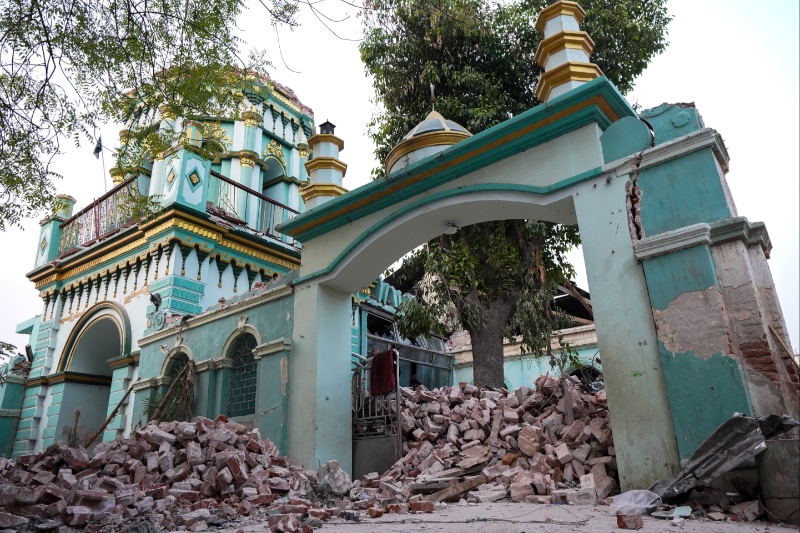Proposal for Masjids’ Safety and Structural Resilience in Earthquake-Prone Regions of Myanmar
Recent earthquakes across Myanmar have revealed serious vulnerabilities in mosque infrastructure, resulting in tragic casualties. An analysis of these incidents highlights the following contributing factors:
- Outdated Construction: Many mosques were built more than a century ago and do not meet modern safety or seismic resilience standards.
- Overcrowding and Structural Constraints: Annual increases in worshipper attendance (as recorded through Jammah registration) have not been matched by proportional expansion of mosque space. Narrow entrances and confined layouts significantly hinder rapid evacuation during emergencies.
- Severe Seismic Activity: The intensity of recent earthquakes has exposed the inability of older structures to withstand natural disasters.
Strategic Recommendations
To protect lives and strengthen the structural integrity of mosques, we respectfully propose the following actions:
- Authorize Modern Rebuilding: Approve reconstruction of existing mosques using modern materials, updated engineering practices, and contemporary Islamic architectural principles.
- Facilitate Expansion and Vertical Development:
- Where sufficient land is available, allow horizontal expansion of mosque facilities.
- In land-constrained areas, grant permissions for vertical construction (multi-level mosque structures) to accommodate worshippers safely.
Coordinated Implementation
We recommend that all mosque management committees:
- Prepare detailed documentation on current structural conditions.
- Submit formal requests, either through authorized religious councils or collectively to relevant national authorities.
By investing in structurally sound and scalable places of worship, Myanmar can protect its citizens while upholding the sanctity and accessibility of religious life.
Respectfully submitted on behalf of Myanmar’s Muslim communities.
ငလျင်ဒဏ်ခံရသော မြန်မာမိုင်ငံအတွင်းမှပလီများတွင် လူအသေအပျောက်များရခြင်းမှာ..
၁။ လွန်ခဲ့သော နှစ်၁၀၀ကျော်ကဆောက်ခဲ့၍ ခေတ်မမှီ ခိုင်ခံ့မှုမရှိခြင်း
၂။ တိုးတက်လာသောပလီဝင်ဦးရေ ( ပလီများရဲ့နှစ်စဥ် ဂျမ္မာအပ်စာရင်းအရ သိနိုင်ပါတယ်) နှင့် ပလီအကျယ်အဝန်းလောက်ငှမှုမရှိပဲ တံခါးပေါက်ကျဥ်းမှစုပြုံတိုးထွက်ရသဖြင့် လူအားလုံးအပြင်ကို မြန်မြန်မရောက်နိုင်ခြင်း
၃။ ငလျင်အင်အားပြင်းခြင်း တို့ကြောင့်ဖြစ်ရကြောင်း သိရှိနိုင်ပါတယ်။ ဒါကြောင့်မို့..
၁။ ခေတ်မှီပစ္စည်း၊ ပိသုကာလက်ရာပုံစံ၊ ခေတ်မှီဖွဲ့စည်းတည်ဆောက်ပုံ တို့ဖြင့်ဆောက်ခွင့်ပြုရန်
၂။ ပလီပိုင်မြေရှိလျင် အကျယ်တိုးချဲ့ခွင့်၊ မြေမရှိလျင် အထပ်တိုးဆောက်ခွင့်ပြုပါရန်… သက်ဆိုင်ရာ ပလီများအနေဖြင့် စာရင်းဇယားတိကျစွာ သာသနားအဖွဲ့အစည်းများမှတဆင့်သော်လည်းကောင်း၊ နိုင်ငံတော်အုပ်ချုပ်သူလူကြီများထံ တိုက်ရိုက် (ပလီများအားလုံးစုပေါင်းပြီး) တင်ပြသင့်ကြောင်း အကြံပြုအပ်ပါတယ်ခင်ဗျ။
STUPID FB AI Removed my post. THOSE WHO REPORTED MY POST MUST BE BANNED PERMANENTLY FROM USING FB and reported to ICC for RACISM.






